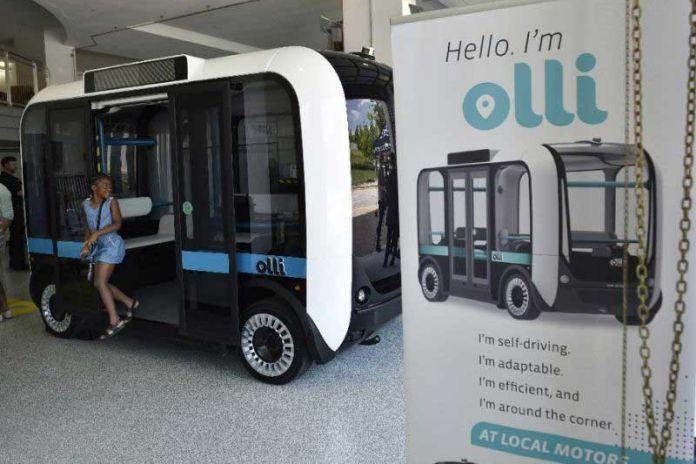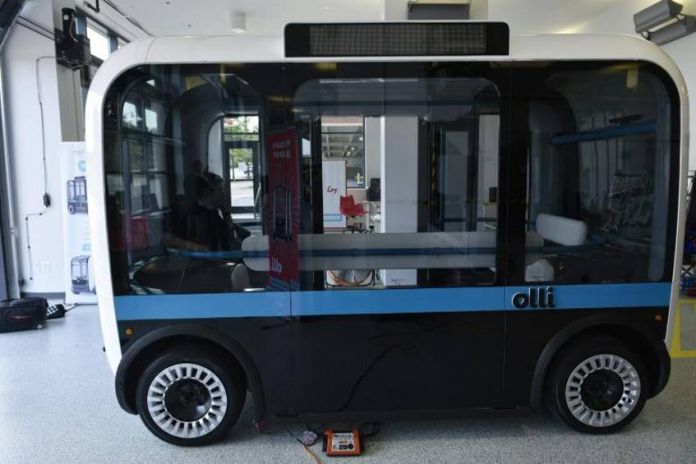Since 1984, 3D printing technology is taking place around us. 3D printing is also called additive manufacturing (AM), is used to combine a three-dimensional object. In this technology, to develop an object, serial layers of material are formed under computer control. The 3D printed object can be of any size made from a 3D model or other electronic data sources.
In our earlier article, ‘The Future Is Now: 5 Ways 3D Printing Is Changing the World’, we got an idea about how 3D technology changing the world. It told us that every household will soon have the means to make life a lot more convenient. Through various sectors like designing in Architecture and Fashion, Food, Guns, and Medicines, it making changes in people’s daily life.
Recently, Arizona-based Local Motors develops a 3D-printed, autonomous on-demand minibus called Olli. They develop Olli with a partnership in IBM’s supercomputer platform Watson.
Olli is capable of carrying 12 people at a time. This minibus was developed on demand of public transportation solution that passengers can call through their mobile app. This also can be printed on the requirement of small organizations in a matter of hours.
Previously, Google and several automakers developed their self-driving- autonomous cars. Similarly, for the first time, Olli: the self-driving minibus is also ready to go into service as soon as management allows it.
John Rogers, Local Motors co-founder, and chief executive said, “The technology has been ready fielding it is what has been hard. Because of fielding, Local Motors can design and make the vehicles to requirements and give service to local governments or other buyers. To sell in the marketplace, it is ready now.”
“The company has an advantage over other systems because it is building the vehicles from the ground up, and producing most components with 3D printers. We hope to be able to print this vehicle in about 10 hours and assemble it in another hour,” he continued.
According to Roger, with about 45 investors, the private company can renovate its design based on what a customer wants. It also can reduce the foundation cost of traditional automakers.
Watson Experience:
Olli has a system developed by Local Motors. The driving is operated by this system with several tech partners and software. IBM is providing the user interface. Through this, passengers are able to establish communication with Olli.
IBM’s Bret Greenstein, said, “Watson is bringing an understanding to the vehicle. If you have someplace you need to be you can say that in your own words.”
Even if it has worked with other automotive partners on technology solutions, it gains IBM’s first attempt in fully autonomous driving. IBM sees it as the first complete solution” for autonomous driving and makes use of Watson’s cognitive computing power.
By using “natural language” recognition, developers are able to create “a relationship between the passenger” and the vehicles. Ollie can understand human language, where anyone can walk in and say, ‘I’d like to get to work’. It makes passengers relax and make their enjoy journey happy.
The Olli depends on more than 30 sensors and streams of data from IBM’s cloud. Passengers can ask about how the vehicle works, where they are going, and why Olli is making specific driving decisions through Watson. It gives advice about nearby restaurants or historical sites based on the personal preferences of the passenger.
IBM’s Harriet Green, said, “Cognitive computing provides incredible opportunities to create unparalleled, customized experiences for customers, taking advantage of the massive amounts of streaming data from all devices connected to the Internet of Things, including an automobile’s myriad sensors and systems.”
There is a long list of cities that are interested as Roger discussed with above 50 countries for new transportations solutions.

